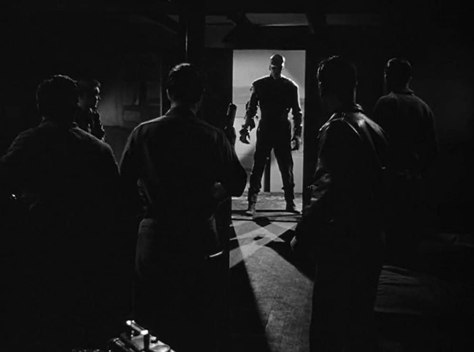
Let’s go back to the beginning…or one of the beginnings, at least.
This movie has been brought up several times before—in reference to the general tone of the Sci-Fi monster movies of the 1950s, and in all the times it’s been ripped-off directly in the ensuing decades. In truth, most monster movies made after The Thing From Another World are ripping it off in some way: this type of movie, with this kind of structure and these themes, didn’t really exist before 1951—The Man From Planet X, an alien-based movie that released at almost the same time, still has a foot in the days of the Universal Monster movies, and while The Thing also does in certain ways we’ll get into, it also loudly asserts its time and place, the early fifties of it all. This is the movie that made paranoia the central feature of so many creature features of the era, literalizing the fears of all that is unknown and inscrutable in a wider universe humanity was gradually discovering—but what became increasingly generalized and irrational as the decade wore on still has a shocking clarity and specificity here at the point of origin.
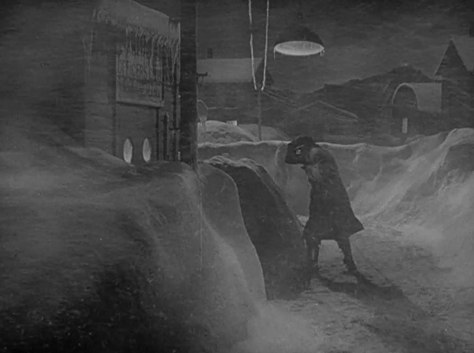
Science Fiction movies, as we would come to know them, were mostly a nascent genre in 1951, distancing themselves from the Gothic fantasias of Metropolis or Frankenstein, and aiming their sights further out into the stars. As I’ve noted in previous posts, The Thing premiered in the same year as George Pal’s When Worlds Collide and The Day the Earth Stood Still, all three of these movies offering a template that subsequent S-F moves would continue to wrestle with for the rest of the decade, if not much longer. Of the three (plus The Man From Planet X, let us not forget), The Thing was the most successful, and exerted the most influence over the monster movie genre. We might not have had so many films about military-types and scientists discussing some monstrous threat, constantly looming off-screen, if not for this movie.
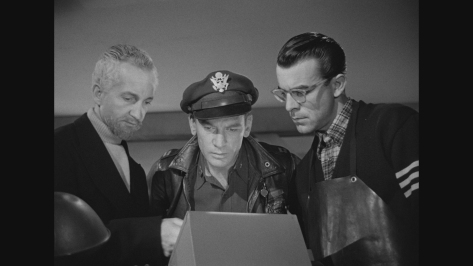
What’s especially surprising is just how openly this script acknowledges the wider public fascinations that led to its creation. The US especially had gone flying saucer crazy after the 1947 story of pilot Kenneth Arnold’s encounter with several disc-shaped objects in the sky (a few months later saw the first stories about the supposed Roswell Incident), and sightings had been reported at a pretty regular clip in the years afterwards, leading to media stories and government investigations. The idea of aliens visiting Earth had been a staple of Science Fiction for decades, but the flying saucer phenomenon was much bigger and broader, fully part of the zeitgeist—and a movie like The Thing fully taps into that, not only by featuring a flying saucer (that we don’t actually see), but by having the characters talk about the government’s dismissal of those claims in 1949. If you wonder why a Hollywood legend like Howard Hawks would think to produce a movie adaptation of a Sci-Fi story about an alien monster, it’s quite simple: it was topical. There was simply something in the air at the time…although probably not actual alien spacecraft.

Hawks acts as the producer of The Thing, with the directorial duties given to his longtime editor Christian Nyby—there have always been stories that Hawks was the real director of the movie, and was giving Nyby the credit so that he could gain membership into the Director’s Guild, but the reality seems to be more in the middle, as usual. As most analyses note, this movie contains some of the hallmarks of Hawks’ other films, mostly in the way Nyby directs the actors—the dialogue is chatty, fast-paced, and overlapping, the characters given a sense of life and camaraderie, and every shot, in the early scenes especially, feels bustling and active. This, to me, also feels like a sign of a film made very early in this cycle of monster movies—without a rigid template and list of character types to follow, this takes more from the Hollywood movie “norm” that was Hawks’ regular purview. In this case, that means that our cast of characters actually feel like real adults, with histories and interpersonal relationships, rather than the cardboard ones you’d increasingly see in subsequent fifties monster movies. Just look at the boozy bondage scene between pilot protagonist Captain Pat Hendry (Kenneth Tobey) and his love interest Nikki Nicholson (Margaret Sheridan), whose rapport is crackly and equal in nature (she may be “just” a secretary, but she can keep up with him every moment)—it’s the kind of character-based scene I don’t expect to see in any of the countless follow-ups, all which prefer to traffic in only mild, bloodless romance and to have most characters there for exposition or body counts. There’s a similarly natural feel to the relationship between Hendry and the rest of his crew, and with the nosy comic relief journalist Ned Scott (Douglas Spencer), who tags along for everything even though he is constantly told that he’s not authorized to take pictures or send reports (to the point where he openly contemplates killing himself when he thinks he’s missed getting the exclusive scoop about the whole alien attack business.) Although set in an Arctic base, there’s really not a sense of isolation here, despite the miles of frozen nothing surrounding them…until that alien attack business starts happening, of course.
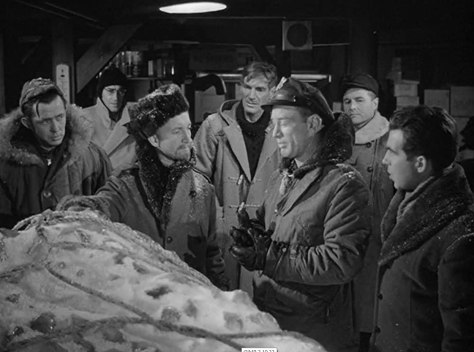
You know the story: the crew hear a report of a mysterious flying object spotted near the base (they wonder if it’s the Soviets asserting their presence in the North, another reminder of just what era we’re in), find a UFO buried underneath a sheet of ice, and accidentally blow it up with thermite grenades, but luck into finding the frozen body of the craft’s occupant, bringing it back to the base and awaiting orders from up the chain of command. The frozen fiend eventually gets out because the guard forgot to unplug an electric blanket before using it to cover up the alien’s disturbing face, and soon their bumping research station has a vicious ET running around its darkened corridors. Even the people who have long revered this movie acknowledge that the monster itself is not terribly scary-looking, with actor James Arness (later to co-star in Them!) decked out with make-up and dollar store pyjamas to look like an off-brand Frankenstein Monster. This is a far cry from the shape-shifting abomination featured in the story this is loosely based on, influential Sci-Fi story editor John W. Campbell’s 1938 novella “Who Goes There?”, and while the most likely explanation is that the special effects of the time were simply unable to bring that vision to life, it’s also possible that, in a time when alien monster movies were non-existent, the producers simply defaulted to the kind of monster they and the audience knew. As you probably already know, “Who Goes There?” eventually did see an interpretation of its alien brought to life in a movie…a movie that, while returning to the original story, still had a lot of reverence for Nyby and Hawks’ version, even reusing the amazing, stylized title sequence.

Up close, the titular non-descript entity from some planet that isn’t this one isn’t particularly frightening, but the movie rarely lingers on it, another important lesson it passed down to all subsequent monster movies. The alien is more memorable as a barely seen, or unseen, presence—a silhouette in the near-distant snows fighting off a pack of sled dogs, a shape moving in the shadows, the sound of windows and doors breaking down a room or two over. Although it really doesn’t make as many shocking entrances as you would expect, the small, cramped feeling of the base, with only a few key rooms featured and many windows looking out into the endless darkness in which it lurks, the tension as you wait between attacks is still palpable, with the strategic use and non-use of music amplifying it. Just as importantly, it’s also a monster of inference, as some of the bigger imagery (like its spaceship), or its most gruesome actions (hanging two dead men upside down on rafters, described as being similar to a slaughterhouse) are simply told to us by the actors—this might come off as cheap to audiences now, but since the script is fairly intelligent, those choices manage to do the job of making this monster out to be a much larger presence than the effects of the time could allow.
One of the ways it ratchets up that tension is by really honing in on the existential threat posed by the alien, which is something that is definitely carried over into John Carpenter’s version decades later. We are told by our batch of requisite scientists, based on a severed arm, that the creature is a plant, an entity whose structure means that it feels no pain, explaining why it can shrug off bullets, and can even regenerate lost limbs. As lead scientist Dr. Carrington (Robert Cornthwaite, later to appear in the 1953 War of the World’s and Joe Dante’s monster movie love letter Matinee) tells us, being a completely sexless organism (because it propagates itself through spreading seed pods) with no emotions, it has become a being of pure intellect (a “intellectual carrot”, as Ned calls it) that has already leapfrogged humans in terms of technology, building a ship that can travel millions of light-years. It has evidently come to Earth in order to harvest human blood to nourish its seedlings—what did they feed on back home? This is one of those recurring scientific questions that would also become a staple of the genre—seeing us as merely a lower animal, which may or may not explain why this supposedly intellectual carrot lumbers around smashing things like a mindless monster. Whether or not you see this alien as an allegory for the Communist threat during the height of the Cold War, it’s described in terms that are meant to really sell you on its inherent inhumanity, and the horrors it can unleash if it’s not contained.

Just as important to its themes is Dr. Carrington’s view of the monster, which turns from curiosity into something bordering on worship, viewing it as “our superior in every way.” He eventually tries everything he can to stop Hendry and Co. from just blowing the thing up, viewing its continued existence as a boon to science and to the advancement of human intellect, and even feeds some of its pods blood plasma to observe their growth. Carrington very quickly becomes of the other bugbear of the fifties monster movie, the scientist who journeys into realms man was not to go in the pursuit of science—his attempts to justify his fatal position (“We owe it to the brain of our species to stand here and die”) include a reference to “splitting the atom”, which one of the crew immediately identifies as something that’s created more problems than it’s solved, yet another acknowledgement of recent history. Even more interestingly, his desire to preserve the rampaging alien is shared by the military commanders radioing in their orders, meaning that the big climactic showdown is a deliberate act of insubordination as Hendry and the crew decide that human knowledge isn’t worth the threat to life and limb. Eventually, of course, Carrington’s devotion to the monster is proven futile, as an intellectual carrot has no desire to share its secrets.
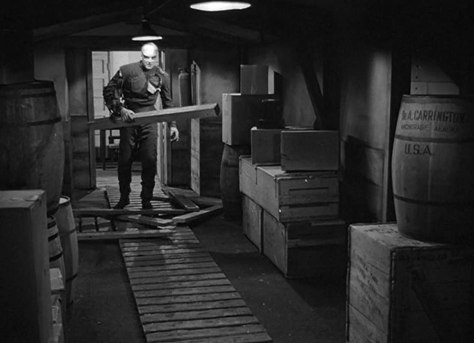
What The Thing then establishes is not just the obvious paranoia about emotionless Others coming in and wrecking up the place to fulfill their inhuman purpose, but an equal paranoia about where our scientific and technological developments—which also seems to value intellect over emotion—were taking our civilization. This thing may be from another world, but its moral defects could just as easily be ours. This is a film that is immediately skeptical of the Post-War American optimism, one bolstered by science, looking under the surface and seeing all the ways it could go very wrong, with potential threats that could appear out of nowhere and threaten everything we know. With that, an effective thriller of the year 1951 becomes The Thing that spawned a thousand more ruminations on a scary, unsympathetic universe—”Keep watching the skies!” becomes not just a good ending line, but an entire ethos.
